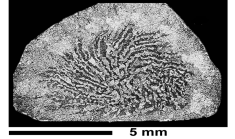Scleractinia taxon details
Turnsekophyllia Baron-Szabo, 2002 †
1440249 (urn:lsid:marinespecies.org:taxname:1440249)
accepted
Genus
Turnsekophyllia cantabrica Baron-Szabo, 2002 † (type by original designation)
marine, fresh, terrestrial
fossil only
Baron-Szabo RC. (2002). Scleractinian corals of the Cretaceous. A compilation of Cretaceous forms with descriptions, illustrations and remarks on their taxonomic position. <em>Self-published, Knoxville, TN, USA.</em> Pp. 1-538, pls. 1-142., available online at http://Published by the author. Knoxville, Tennessee. p. 1–538, pl. 1–142, text-fig. 1–86. [details]
Hoeksema, B. W.; Cairns, S. (2025). World List of Scleractinia. Turnsekophyllia Baron-Szabo, 2002 †. Accessed at: https://www.marinespecies.org/scleractinia/aphia.php?p=taxdetails&id=1440249 on 2025-09-11
Date
action
by
original description
Baron-Szabo RC. (2002). Scleractinian corals of the Cretaceous. A compilation of Cretaceous forms with descriptions, illustrations and remarks on their taxonomic position. <em>Self-published, Knoxville, TN, USA.</em> Pp. 1-538, pls. 1-142., available online at http://Published by the author. Knoxville, Tennessee. p. 1–538, pl. 1–142, text-fig. 1–86. [details]
basis of record Cairns, S.D., R. Baron-Szabo, A.F. Budd, B. Lathuilière, E. Roniewicz, J. Stolarski & K.G. Johnson. (2010). Corallosphere. , available online at http://www.corallosphere.org [details]
basis of record Cairns, S.D., R. Baron-Szabo, A.F. Budd, B. Lathuilière, E. Roniewicz, J. Stolarski & K.G. Johnson. (2010). Corallosphere. , available online at http://www.corallosphere.org [details]
 Present
Present  Inaccurate
Inaccurate  Introduced: alien
Introduced: alien  Containing type locality
Containing type locality
From editor or global species database
Diagnosis Colonial, phaceloid-reptoid. Gemmation extracalicinal. Corallites connected by tubes. Internal development of the tubes identical to images of the lower part of the corallites. Costosepta subcompact or fenestrate, beaded marginally, anastomosis frequent. Columella papillose or formed by elongated segments. Synapticulae abundant. Endothecal dissepiments vesicular to subtabulate. Wall synapticulothecal. Microstructure characteristic of the acrosmiliids. [details]Remark Comparison. The new genus is closely related to the solitary form Acrosmilia, but differs from it in forming phaceloid colonies, with corallites united by reptoid tubes. [details]
